How to Practice Golf: How to Build Your Annual Golf Training and Tournament Plan (Part 1)20/10/2012
If you’re serious about your golf (and I know that you are) then you are serious about performing to the best of your ability as often as you can. This will be easier to do with an annual golf training and tournament plan that takes into account development of what at Pro Tour Golf College we call your “critical to performance skills.” These are the golf skills that when developed fully will give you your best chance of lowering your competitive score average in tournament competition. The key to developing elite golf performance is preparation, and to prepare properly for tournament golf you need to look at a full year of golf and identify the important tournaments that you want to perform your best in (see below) and then develop a training plan that carefully manages your effort throughout the year to peak for these events. An annual golf training plan is called a periodized plan and it is essential for developing and maximizing your physical and mental skills so you can prepare appropriately for your important tournaments throughout the year. A periodized golf plan breaks your year down into smaller and more manageable phases of training. Surprisingly most elite golfers in our experience don’t have or use an annual golf training plan which makes no sense if you’re a serious competitive golfer who wants to continue to get better. Sounds easy? It’s not. But it is definitely worth learning how to do as it will give you a decided edge over your fellow competitors who don’t know how to periodize their year. Over the next few weeks I'm going to show you how to build your very own training plan from the ground up. Traditionally the development of elite golfers has been an approach of “a little bit of this and a little bit of that.” In other words “an adjustment here and an adjustment there” with no real thought about longer term development. Part of the reason for this is that most of the golf experts focus their energy on developing and improving golf swing mechanics and as such don’t often see a long term development plan as being important compared to fixing a nagging swing issue. This is not to say that fixing nagging swing issues isn't important, however in this article the focus is on what a elite golfer would need to do over a year to develop the critical to performance skills that would influence better performances when the major golf tournaments come around. You will more than likely play a lot of golf events in a calendar year and the idea behind periodization is to break your year down into days, weeks and months. Then you look at the year and decide when the best time to peak for the important events is and build your training approach around these key tournaments. In Australia the major professional golf events on the PGA Tour of Australasia start in October and go through to December. For many Australian professional golfers who have been playing on the pro-am circuits around Australia, these bigger money tournaments are the events they want to peak for. The table below forms a part of the first stage of an annual golf training and tournament plan. It shows the key big money tournaments (Highlighted Yellow) that Australasian tour players will want to peak for. This approach allows you to see the 'bigger picture' which makes it easier to decide on when to start working on your golf improvement strategies. Ideally as an elite golfer you will work closely with your golf coach/instructor to develop, adjust and review your annual plan to get it just right at the appropriate time. It isn't a perfect science - there isn't one, however it is a lot better approach to golf improvement than the more common approach of a short-term ‘fix’ mentality that still pervades golf instruction culture. 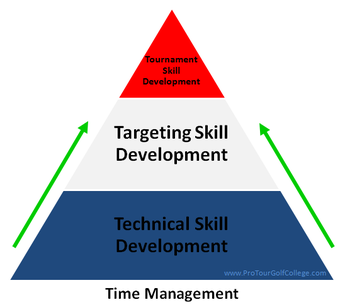 Click on the image to make it larger Click on the image to make it larger If you were going to improve an aspect of your golf swing performance when would you begin the work? As we've discussed in previous articles changing golf swing techniques requires a planned approach. Elite golfers are always working on improving their golf swing techniques and with a planned approach you have a much better chance that your preparation will lead to better and more consistent performances on the golf course. This is the key to periodizing your golf training. Plan the development phases very carefully so that you can train your golf skills to a very high trust level when you compete in important tournaments. At Pro Tour Golf College we begin to build an annual plan by dividing the golf skills development into three discrete categories. 1. Technical skill development 2. Targeting skill development 3. Tournament skill development Technical Skills (Drills, video analysis, training aids and lots of repetition) Technical skill development work in long game and short game is done early in the year well before the main tournaments begin on the calendar so our golfers can improve their weaker techniques and get them to the autonomous level. In golf this rarely happens for the majority of elite golfers we've observed who are still working too much on their techniques by the time the 'majors' come around. Targeting Skills (Targets, ball flight control, skill testing, rhythm and tempo) High level golf performance requires the ability to achieve a certain standard of excellence in tournaments which in this case is to hit a certain percentage of golf shots into fairways and greens. The targeting performance threshold for golf tournament professionals is a 60 percent standard. What this means is that your golf scores get lower and more competitive in tournaments when you reach this important level. Sixty percent of fairways hit is around 8 fairways out of 14 and 60 percent of greens hit in regulation is around 11 greens out of 18. A 60 percent standard or better in your green-side short-game skills means that 60 percent of your green-side golf shots are converted into pars or better which will guarantee a lower competitive score average. At Pro Tour Golf College students understand that they need to learn to hit more than 60 percent of their green-side shots into a target zone that is only 1.5 metres or approximately 5 feet. In this way they are facing putts with a probability of success of greater than 50 percent. 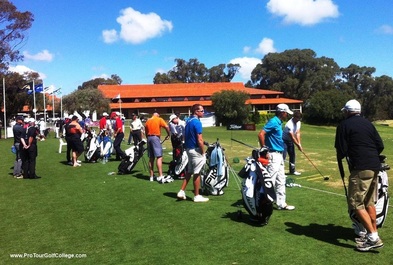 Tournament Skills (Game plans, course charting, rhythm and tempo and mental skills) You might be completely happy with your golf swing and you’re hitting your golf shots into the target zones 60 percent of the time or better, but this is only a part of the puzzle. You need to be able to competently prepare to play in golf tournaments which requires course plans and charting of holes. You also need a very high level of trust in your skills and capability to perform and this phase is all about competing as often as possible to develop your confidence to perform to the best of your ability. The tournament skills part of your development is mostly your mental skills development. This is an extremely important part of your over-all approach to peaking at the right time for golf tournaments. By the time you have arrived at the tournament skills part of your development process you will be spending a lot more time on mental skills strategies than you will on technical skill work. The image below shows a model of the way we plan golfer development at Pro Tour Golf College. Our aim is to get the technical work completed within a 5 month window so we can concentrate on developing targeting skills and mental skills. You will see in the model overlapping from one phase to the next and in this example we're aiming be in the mental and scoring zone by September. Notice also how the technical training load starts high in January and tapers by May and then targeting loads peak in August before tapering again into the key tournament dates? This is really the art and science of how training and tournament planning works. With practice you get better and managing your skill development so you can sharpen your skills to perform at the right time. Now you might be thinking that there are tournaments throughout the year so how does this affect performance in them?
The way to look at it is that when you're in the technique development phase you use the minor golf tournaments to test your playing skills for feedback on how your different golf skills are holding up under tournament pressure. Next week we'll continue building your annual golf training and tournament plan with the goal of showing you how you can put together your own plan for next year and in the next article we'll be covering the training phases, and the different training cycles that fit into the training phases that help to break your annual plan into smaller more manageable segments. So keep an eye out for part 2 next week and thanks for taking the time to read our articles. We really appreciate the support. Lawrie Montague and David Milne - Pro Tour Golf College Your Success On Tour is Our Business Comments are closed.
|
Archives
June 2019
|
Proudly Supported By
Copyright © 2011 - 2018 Pro Tour Golf College
Website Managed By Golf Performance Media
All Rights Reserved
Website Managed By Golf Performance Media
All Rights Reserved

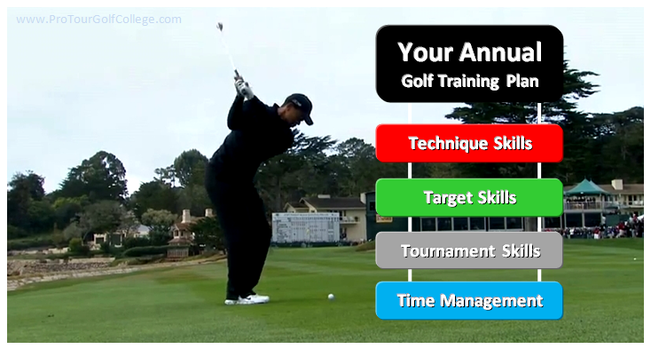
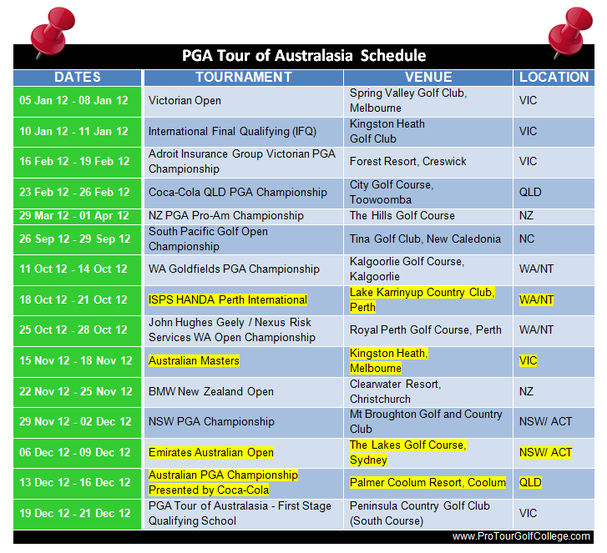
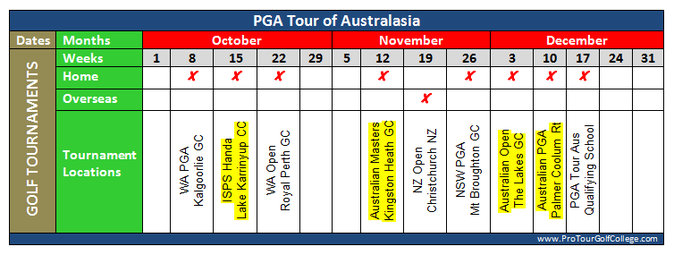

 RSS Feed
RSS Feed



